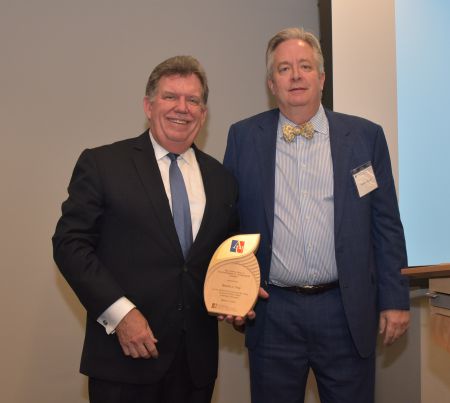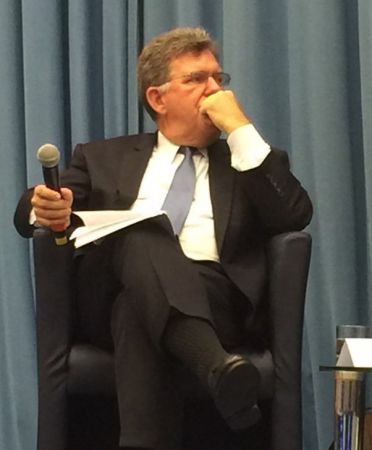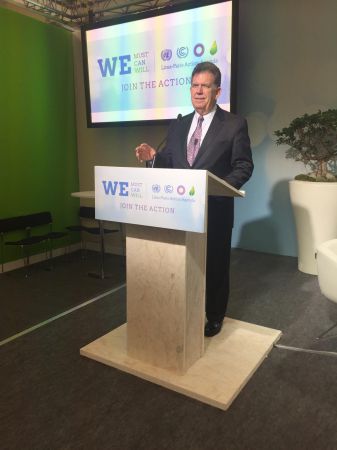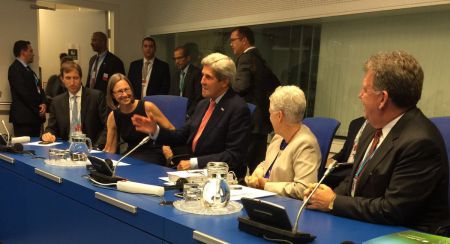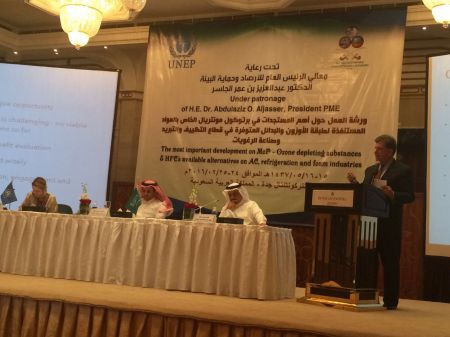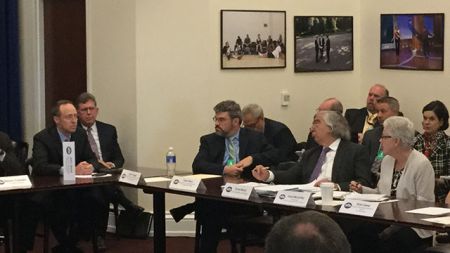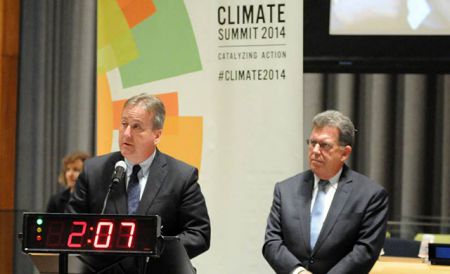“Thank you Steve for those kind remarks, and more importantly thank you for your collaboration over the last two decades. It has been an honor to work with you.
I would like to thank the Center of Environmental Policy, and American University for the honor you have bestowed on me this evening. It was forty years ago this year that I was attending law school at the AU Washington College of Law, and working for the Air Conditioning & Refrigeration Institute on energy efficiency issues and the emerging issue of ozone depletion. At the time we called it the unproven computer theory. If you recall, at that time computers were still a “new technology” themselves. Little did we know, and what we know now.
It is an even greater honor to share this program with Bill Reilly, and early and consistent leader in the environmental protection venture, Phil Sharp, a long time hero for sane and rational policy approaches, and my friend, Linda Fisher, who has been a personal friend, a successful public servant, and a mentor in the field of corporate sustainability. And it is an honor to now be included in the same company with a host of other environmental policy leaders and professionals who have been honored with the Reilly Leadership Award.
The Alliance for Responsible Atmospheric Policy was started in September 1980, one of the first ever multi-industry coalitions organized around an environmental policy issue. Not sure we knew it at the time, but it was apparently novel to organize around the notion of building support for technologies that were at the cusp of this country’s economic development, and seeking ways to avoid unilateral regulatory initiatives, based on an unproven computer driven scientific theory.
It has been a long and twisting path to where we stand today. A path marked by enormous victories and environmental success, but one also frustrated at times with big disappointments and continuing huge challenges. I am often asked “What is the difference that has made the Montreal Protocol so successful?” and “how has the Alliance contributed to that success?”
My answers have not changed. The Montreal Protocol was a first ever response to a global environmental emergency. It has succeeded far beyond anyone’s expectations at the time of its signing in 1987, and has also become one of the most successful technology transfer programs ever developed, and yes, now we know that it is still the most effective global climate protection agreement that was not intentionally negotiated!
The Protocol is the embodiment of sustainability principals-environment, economy, society-and has succeeded in delivering benefits to human health and the environment while also expanding economic opportunity and ensuring the availability of technology for all countries rich and poor. As you know, it is guided by an inclusive science assessment process, but it is also guided by and enormously effective technology and economic assessment process. The process is open and transparent, and has encouraged and demanded participation by governments, NGOs and industry together. It works for developed and developing countries alike, but also provides a modest but extremely important funding mechanism for those developing economies.
The formula seems so simple, the notions so quaint, but it works and it works well. At the end of the day however, the most critical element to the success of the Montreal Protocol has been the human element. We were both fortunate and lucky to have great leaders from government, industry and the environment community at the right times, and a shared faith and vision that failure was not an option.
I was present from the beginning of the negotiations in 1986, and have been present in that process ever since. It was fascinating to watch the world community come together under the crucible of a looming environmental crisis, great political and economic uncertainty, and develop the unbelievable group dynamic to tackle and solve this global threat. We were lucky to have great and decisive leaders in the early days, including Ronald Regan, Margaret Thatcher, Lee Thomas, and Bill Reilly, and corporate leaders such as Doc Blanchard at DuPont, and Dick Barnett, as well as hundreds of other key participants who have made a difference over the last three decades.
The Alliance has had the challenge and honor of leading the industry drive for environmental and economic solutions. It has been ably served by hundreds of industry representatives who have diligently served on its Board, and a dozen Board chairs who have dedicated themselves to achieving our mission. And it has been this human element that has made the difference. The Alliance was the first industry group to call for negotiation of an international agreement to limit the use of ozone depleting substances, the first to call for the phaseout of those substances, then to accelerate the phase out even more quickly, to support a transition period for HCFC compounds, to accelerate the global HCFC phaseout, to include HFCs in the basket of gases covered by the emerging climate agreements, the inclusion of an HFC title in the US Waxman-Markey climate legislation, the call for an agreement to achieve an HFC phasedown under the Montreal Protocol.
Today, the Alliance industries have been one of the few to pledge and 80% global reduction of HFC emissions by 2050, resulting in the Kigali amendment to the Montreal Protocol, which has entered into effect this year.
It is a strong legacy, and the challenges and work continue. I learned long ago that it is hard to achieve your goal if you don’t have one. Our proudest achievement has been the ability to ask the questions of what is the right thing to do, what is the best way to manage towards environmental and economic success—sustainability. My pride is to have served with these people and these companies for so many accomplishments. And I take great personal satisfaction that after 40 years, we continue to ask the hard questions and work towards achieving a sustainable future.
Finally, I would like to thank my wife, Nancy and my children, and the partners in my firm, Who have supported me throughout the years and the challenging issues and travel as we have striven to achieve these outcomes.
In closing, thank you to American University, and the Center for Environmental Policy. Congratulations to our honorees this evening, and to the students, we have decades of opportunities ahead of us to bring success in response to our continuing challenges, and for that, I wish you godspeed, good luck, and continuing success.”

